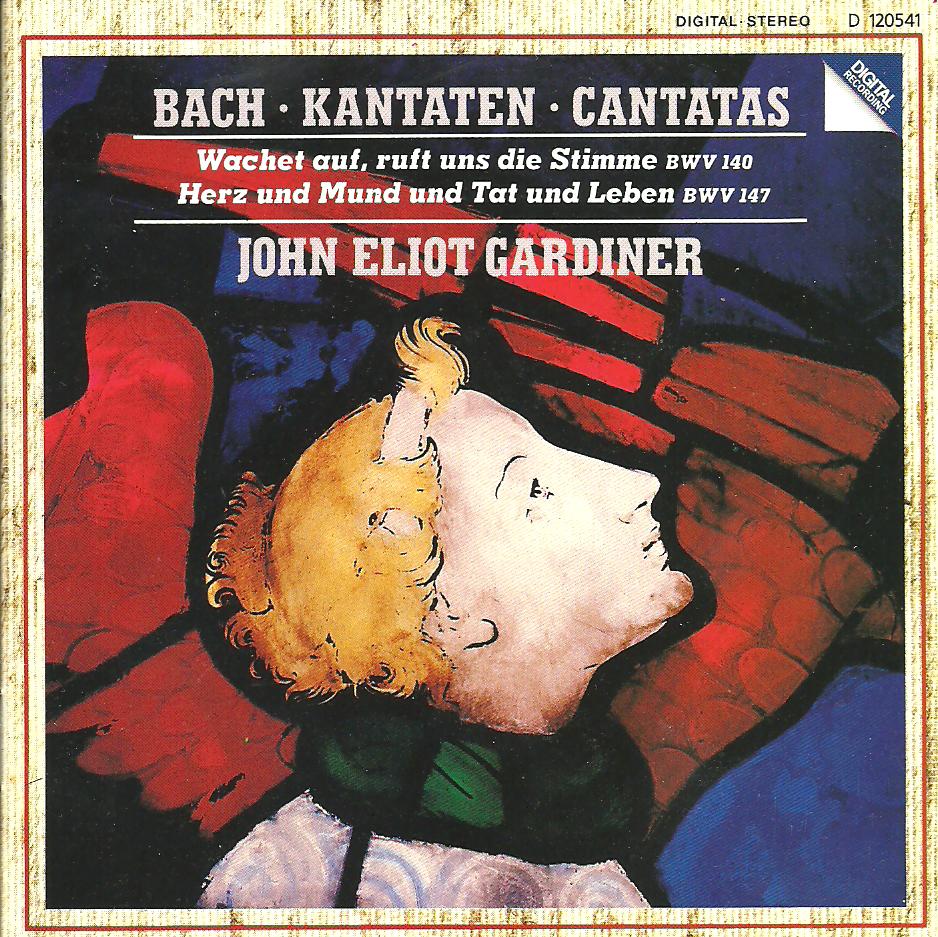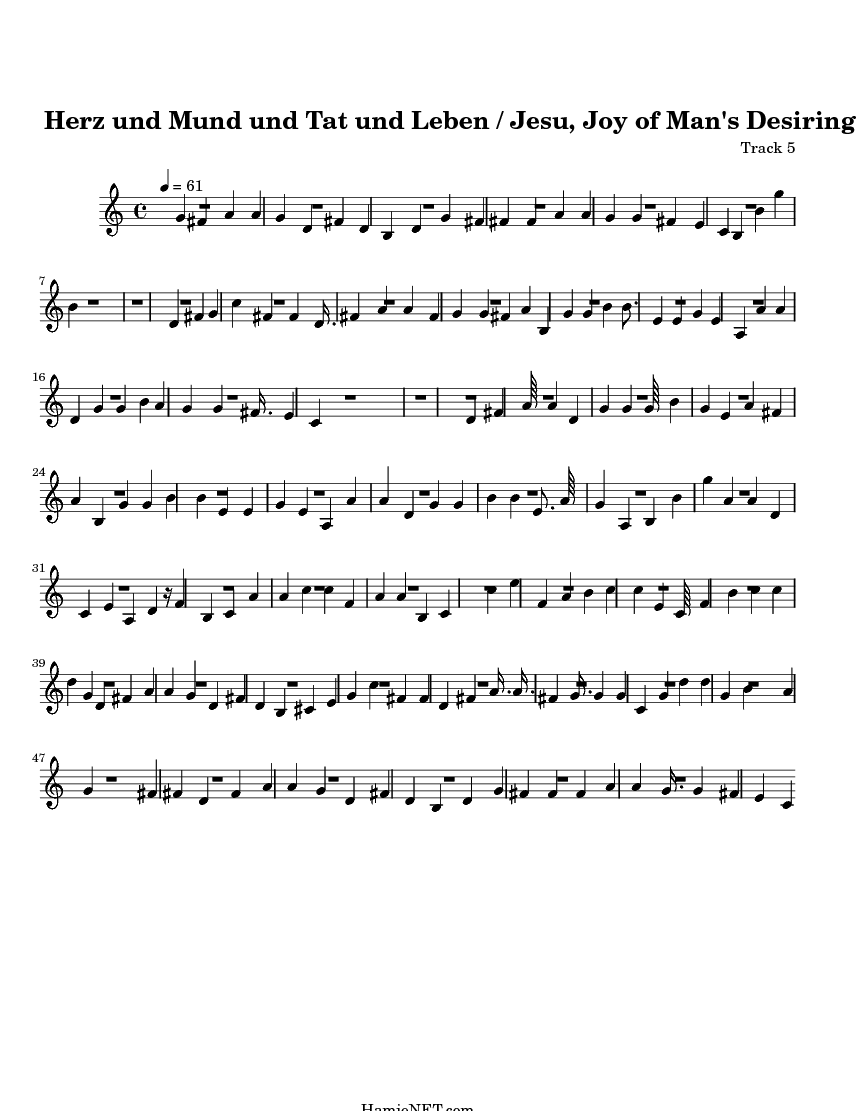Herz und Mund und Tat und Leben, BWV 147
Heart and Mouth and Deed and Life is the title of two churches cantatas by Johann Sebastian Bach. It was written originally in Weimar cantata for the 4th Advent 1716 ( BWV 147a ) and expanded it in 1723 in Leipzig for the feast of the Visitation ( BWV 147).
Formation
The cantata was composed in its presently known form for the July 2, 1723, the feast of the Visitation and thus belongs to the first Leipzig cantata cycle. It is based on the Weimar cantata BWV 147a from 1716, of which only the text remains. It is an open question whether Bach has ever completed or performed the original version of this composition. The Weimar template has been revised by Bach in Leipzig and greatly expanded. The original seal of Salomon Franck was adopted in the Leipzig version; the final Chorales from the Leipzig version (sets 6 and 10) are the verses 6 and 17 of Martin Jahn Choral Jesus, delight of my soul (1661 or 1668).
Topic
The text, written for the Advent Franck was transferred to the Leipzig version of Bach on the Marian feast, as there was in Leipzig in Advent tempus clausum and could be performed only on the first Sunday of Advent cantata music.
The central theme is the public commitment to God and Jesus. While the original version by 1716 the confession refers to the person of John the Baptist, which transmit added later parts of the text that meaning to Mary and her Magnificat (Gospel on July 2 ) as a model for the present community. On the content of the Magnificat particularly the recitative ( 4th movement ) refers.
Construction
Leipzig version ( BWV 147)
Formally, the zehnsätzige cantata composed of two parts, which were performed before and after the sermon and choir with an identical set ( see below), a chorale, complete.
Weimar version ( BWV 147a )
Cast ( Leipzig)
- Voices: soprano, alto, tenor, bass, all both as a tutti as well as solo work
- Orchestra: Tromba in C, Oboe I / II (also called oboe d' amore and oboe da caccia I / II), violin I / II, viola, basso continuo with bassoon
Special
The work belongs to the popular and relatively frequently performed Bach cantatas. In the elaborate opening chorus a solo trumpet virtuoso underlines the festive character of the piece. The final two hymns of the first and second part, Happy am I, that I have Jesus, Jesu, Joy are framed by a triplet string melody and internationally among the most popular compositions by Bach, not least through numerous edits and performances in the 20th century, such as by the pianist Myra Hess and Dinu Lipatti. A pop version of Apollo 100 made it in 1972 under the title Joy at number 6 on the U.S. charts.










